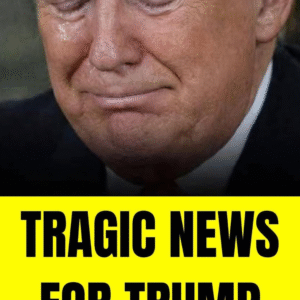The United States finds itself at the center of an unprecedented diplomatic and communication crisis as President Donald Trump’s official correspondence with international leaders has drawn widespread ridicule and concern from educators, linguists, communication experts, and political analysts around the world. The latest incident involves a formal letter to Japanese Prime Minister Shigeru Ishiba that has been characterized by critics as resembling the writing quality of an elementary school student rather than the sophisticated diplomatic communication expected from the leader of the world’s most powerful nation.
This communication controversy has far-reaching implications that extend well beyond simple matters of grammar and style, touching on fundamental questions about American leadership credibility, diplomatic effectiveness, and the standards of professionalism expected in international relations. The incident has prompted serious discussions about how communication quality affects national image, trade negotiations, and America’s standing in the global community during a period when international relationships face unprecedented challenges.
The letter in question, which announces the implementation of significant trade tariffs against Japan, has become a lightning rod for criticism not only due to its numerous grammatical errors and unconventional capitalization patterns but also because of the stark contrast between its informal tone and the gravity of the economic policies it announces. The combination of poor writing quality and aggressive trade threats has created a perfect storm of diplomatic and communication concerns that threaten to undermine American credibility in international forums.
THE CONTROVERSIAL LETTER REVEALED
The formal diplomatic correspondence from President Trump to Prime Minister Ishiba, which announces the implementation of 25 percent tariffs on Japanese goods along with threats of escalation should Japan choose to retaliate, reads more like a hastily composed social media post than a carefully crafted piece of international diplomacy. The letter’s tone, structure, and presentation have shocked diplomatic professionals who are accustomed to the formal protocols and sophisticated language typically employed in high-level international communications.
The document begins with “His Excellency Ishiba Shigeru, Prime Minister of Japan, Tokyo” and proceeds with “Dear Mr. Prime Minister: It is a Great Honor for me to send you this letter in that it demonstrates the strength and commitment of our Trading Relationship…” The immediate capitalization of “Great Honor” and “Trading Relationship” sets the tone for what critics describe as a document riddled with unnecessary and incorrect capitalization throughout its entirety.
Perhaps most jarring to readers is Trump’s assertion that the letter demonstrates “the fact that the United States of America has agreed to continue working with Japan, despite having a significant Trade Deficit with your great Country.” This phrasing treats the continuation of diplomatic relations as a favor being bestowed upon Japan rather than a mutual arrangement between sovereign nations, reflecting a transactional view of international relations that many diplomats find troubling.
The letter continues with increasingly problematic language choices and formatting decisions that would likely receive failing grades in any undergraduate composition course. Trump writes: “Therefore, we invite you to participate in the extraordinary Economy of the United States, the Number One Market in the World, by far.” The capitalization of “Economy,” “Number One Market,” and “World” appears arbitrary and unprofessional, while the phrase “by far” adds an unnecessarily boastful tone to what should be formal diplomatic communication.
The most substantive portion of the letter announces: “Starting on August 1, 2025, we will charge Japan a Tariff of only 25% on any and all Japanese products sent into the United States, separate from all Sectoral Tariffs.” The word “only” before “25%” seems to minimize what represents a substantial trade barrier, while the inconsistent capitalization of trade-related terms throughout the document creates confusion about which concepts the author considers most important.
LINGUISTIC ANALYSIS AND ACADEMIC ASSESSMENT
Professional linguists and communication experts who have analyzed the letter have identified numerous fundamental errors that would be unacceptable in any formal writing context, let alone diplomatic correspondence between world leaders. The document demonstrates consistent problems with capitalization rules, sentence structure, punctuation usage, and overall coherence that suggest either a lack of understanding of basic writing conventions or a deliberate rejection of established communication standards.
Dr. Sarah Mitchell, a linguistics professor at Georgetown University who specializes in political communication, notes that the letter exhibits “systematic vi*lations of standard English capitalization rules that appear to follow the author’s personal emphasis preferences rather than grammatical conventions.” She points out that terms like “Trade Deficit,” “Tariff,” and “Non Tariff” receive capitalization treatment typically reserved for proper nouns, while the seemingly random capitalization of words like “Economy” and “Country” creates visual and conceptual confusion for readers.
The sentence structure throughout the letter presents additional challenges for professional analysis. Many sentences exceed recommended length limits for formal writing while attempting to convey multiple complex concepts simultaneously. For example: “We have had years to discuss our Trading Relationship with Japan, and have concluded that we must move away from these longterm, and very persistent, Trade Deficits engendered by Japan’s Tariff, and Non Tariff, Policies and Trade Barriers.” This single sentence attempts to cover historical discussions, current conclusions, economic concepts, and policy mechanisms in ways that obscure rather than clarify the intended message.
Communication professionals have also noted the document’s inconsistent tone, which alternates between formal diplomatic language and casual conversational phrases. The letter opens with traditional diplomatic courtesies before shifting to language that sounds more like a business negotiation or social media post than international correspondence. This tonal inconsistency undermines the authority and professionalism that diplomatic communications are designed to project.
Educational assessment experts who have evaluated the letter using standard readability metrics confirm that the writing quality falls significantly below expectations for professional communication at the highest levels of government. Dr. Michael Rodriguez, who directs the Communication Assessment Center at Columbia University, explains that “the letter demonstrates writing patterns consistent with middle school composition rather than the sophisticated communication skills expected from national leadership.”
COMPARISON TO ELEMENTARY EDUCATION STANDARDS
The widespread comparison of Trump’s diplomatic letter to “fifth-grade” writing has prompted educators to examine exactly what such a comparison means and whether it accurately reflects the quality of the communication. Fifth grade, which corresponds to Year Six in the British educational system, represents a stage where students are typically 10-11 years old and are expected to demonstrate basic mastery of fundamental writing skills including proper capitalization, sentence structure, and coherent paragraph organization.
Elementary education specialists who have reviewed the letter note that many of its errors would indeed be flagged by teachers working with fifth-grade students. The random capitalization of common nouns, the inconsistent use of punctuation, and the unclear sentence structures all represent violations of writing standards that are typically mastered by competent elementary school students. However, some educators argue that comparing the letter to fifth-grade writing may actually be unfair to elementary school students.
Mrs. Jennifer Walsh, a veteran elementary school teacher with twenty-five years of experience, observes that “most of my fifth-grade students understand basic capitalization rules better than what’s demonstrated in this letter. They know that you don’t capitalize random words just because they seem important to you.” She notes that elementary writing instruction emphasizes consistency and rule-following in ways that appear absent from the presidential communication.
The comparison to elementary school writing has also highlighted the significant difference between the communication skills expected at different educational levels and the standards that should apply to international diplomacy. While fifth-grade writing focuses on demonstrating basic competency in fundamental skills, diplomatic communication requires sophisticated understanding of tone, audience, cultural sensitivity, and the complex implications of language choices in international contexts.
Educational assessment tools commonly used to evaluate student writing have been applied to Trump’s letter by several academic institutions, with results consistently placing the communication below high school level and, in many cases, below middle school standards. These assessments evaluate factors including vocabulary complexity, sentence variety, grammatical accuracy, and organizational coherence—all areas where the letter demonstrates significant deficiencies.
INTERNATIONAL DIPLOMATIC STANDARDS AND PROTOCOLS
The diplomatic community has responded to Trump’s letter with a mixture of bewilderment, concern, and professional embarrassment about how such communication reflects on American diplomatic capabilities and international relationships. Formal diplomatic correspondence follows centuries-old protocols designed to ensure clarity, respect, and effective communication between sovereign nations, standards that the Trump letter appears to ignore entirely.
Traditional diplomatic writing emphasizes precision, courtesy, and cultural sensitivity while avoiding language that could be interpreted as threatening, condescending, or unnecessarily provocative. Professional diplomats spend years learning how to craft communications that advance national interests while maintaining the respectful tone necessary for productive international relationships.
Ambassador Katherine Harrison, who served in various diplomatic posts during her thirty-year State Department career, explains that “diplomatic correspondence serves multiple purposes beyond simply conveying information. It demonstrates respect for the receiving nation, reflects the professionalism of the sending country, and creates a foundation for ongoing productive dialogue.” She notes that Trump’s letter fails on all these criteria while potentially damaging long-term American interests in the region.
The letter’s threatening tone, particularly the warning that “whatever the number you choose to raise them by, will be added onto the 25% that we charge,” represents a departure from diplomatic norms that emphasize negotiation, compromise, and mutual benefit. Professional diplomats typically avoid ultimatums and threats in formal correspondence, preferring language that leaves room for face-saving compromises and continued dialogue.
International relations experts have noted that the letter’s poor writing quality may actually undermine its intended economic and political objectives by making American threats appear less credible and professional. Countries that receive poorly written ultimatums may be less likely to take them seriously or may interpret them as signs of American governmental dysfunction rather than strength.
The diplomatic corps within the State Department has reportedly expressed concern about how such communications affect America’s reputation and their ability to conduct effective diplomacy with international partners. Career diplomats worry that poorly written presidential communications make their jobs more difficult by creating negative impressions that must be overcome in subsequent negotiations.
PUBLIC REACTION AND SOCIAL MEDIA RESPONSE
The release of Trump’s letter to the Japanese Prime Minister has generated an unprecedented wave of public criticism and commentary across social media platforms, news organizations, and academic institutions. The combination of poor writing quality and aggressive trade policies has created a perfect target for critics who view the letter as emblematic of broader problems with Trump’s approach to international relations and communication.
Social media users have been particularly vocal in their criticism of the letter’s numerous grammatical and stylistic errors. One Twitter user commented that they saw “so many grammatical errors in this letter, it would not pass a first-year English class,” while another described the letter as “painful to read” and asked “what the f**k is up with all the unnecessary capitalizations?” These reactions reflect broader public concern about communication standards in the highest levels of government.
The phrase “Words fail him” has become a popular summary of public reaction to the letter, capturing the sense that the President’s communication abilities are inadequate for the responsibilities of his office. Many social media users have shared side-by-side comparisons of Trump’s letter with examples of professional diplomatic correspondence from previous administrations, highlighting the stark contrast in writing quality and diplomatic tone.
Educational professionals have been particularly critical of the letter’s quality, with many teachers and professors sharing their professional assessments of the writing on social media platforms. The consensus among these educators is that the letter demonstrates fundamental deficiencies in basic writing skills that would be unacceptable at any level of formal education, let alone in presidential communication.
Some commentators have suggested that comparing Trump’s writing to fifth-grade level may actually be insulting to elementary school students. One social media user wrote: “we should not disrespect fifth graders like this” by comparing their literacy skills to Trump’s diplomatic correspondence, suggesting that many children actually demonstrate better writing abilities than what appears in the presidential letter.
The international dimension of the social media response has been particularly damaging to American prestige, with commentators from around the world expressing shock and concern about the quality of American diplomatic communication. Many international observers have suggested that the letter reflects poorly on American educational systems, governmental competence, and leadership capabilities.





